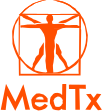“Cholelithiasis
CT scan is only about 75% sensitive for gallstones. Gallstones often have the same density as bile, which makes them invisible on CT. Ultrasound is the best imaging modality for gallstones, with 96% accuracy, and should be used first to assess right upper quadrant pain.3
Contrary to popular belief, CT does fairly well identifying acute cholecystitis: 91.7% sensitive and 99.1% specific in one paper.8 Research directly comparing CT and ultrasound is limited, and most studies are small and showed their effectiveness to be similar. In 1981, a combination of major and minor criteria was found to be 100% sensitive and 96% specific for cholecystitis.14 However, in a 2012 study of over 5,000 patients, ultrasound is only 81% sensitive and 83% specific for cholecystitis.4
Ultrasound is still the preferred modality for diagnosing cholecystitis due to easy access, speed, and lack of radiation. The findings are the same for CT and ultrasound: hydrops, wall thickening or edema, and pericholecystic fluid. CT will likely not pick up a stone in the neck of the gall bladder. CT may be helpful for atypical presentations of acute cholecystitis, acalculous cholecystitis, and to identify complications such as gallbladder perforation. However most stable patients who are highly suspicious for biliary disease should undergo ultrasound and follow up with MRCP. For a fantastic review of pathologies and imaging modalities check out “Evaluating Patients with Right Upper Quadrant Pain” by Genevieve Bennett in the resources section.31
Cholecystitis Imaging
- AXR: 15% of stone visible
- CXR: r/o RLL pneumonia
- U/S: 94% sensitivity and 78% specificity (better than CT
Paucis Verbis_ Strength of diagnostic tests for cholecystitis.pdf
